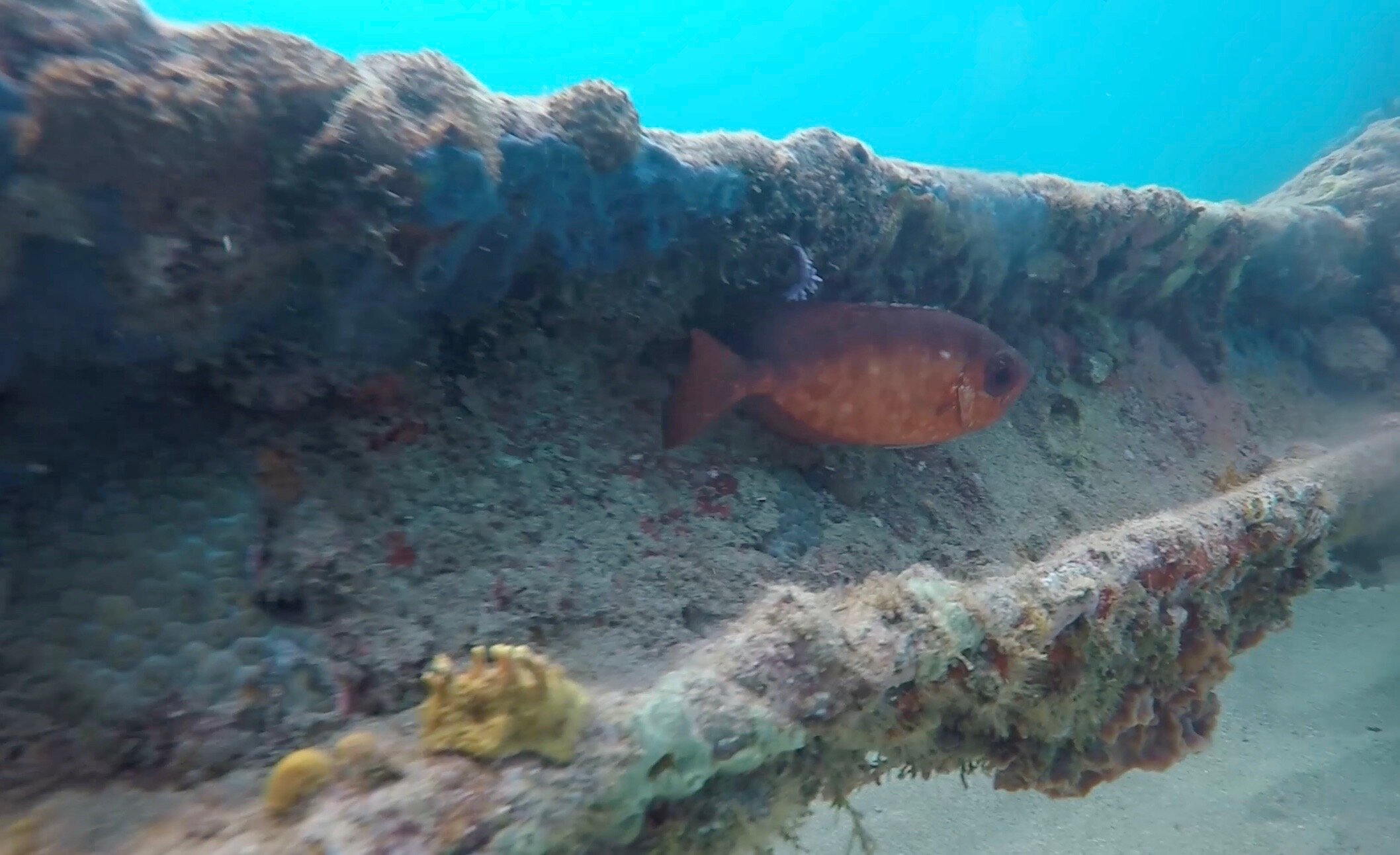A solitary Glasseye Snapper (Heteropriacanthus cruentatus) makes its way through a piece of ocean debris.
A whopping seventy-one percent of Earth is water, so the health of our oceans is critical to all life on the planet. But taking a deep dive into the sea – or even a shallow one – requires extensive training, proper equipment and nerves of steel. A summer camp experience at age 13 sparked Dr. Chelsea Harms-Tuohy’s passion for marine biology. There was one big problem, though. She was afraid to scuba dive. As a child, she avoided submerging herself in the deep end of the swimming pool because of the unpleasant pressure in her ears. But her love of ocean life and the calming influence of an experienced diver – who was a friend at the time and later became her husband – quelled her fears. She now works as a marine biologist and educator in Puerto Rico, where she surveys fish to understand the human impact on their populations and helps to restore ocean habitats for species at risk.
“In theory, counting fish may seem like the title of that Dr. Seuss book,” says Chelsea. “But when you’re underwater in scuba gear looking at many different species, it’s not a ‘one fish two fish’ situation. It takes training and skill to make sure you haven’t counted the same fish multiple times.”
To ensure they collect accurate data, Chelsea uses a transect tape to establish a boundary and teaches students about the behaviors of the fish they are surveying. For example, knowing that bluehead wrasse swim in small groups of 8 or 10 makes it easier to avoid counting them more than once. The researchers record their findings using a four-letter shorthand system on a tablet that allows them to quickly jot notes underwater.
“It gives you almost the exact same sensation as writing with a pencil on paper, which is so cool, because you’re taking notes in the ocean,” she says.
Studying such an extremely vast, complex and interrelated ecosystem is no small feat. By monitoring the population numbers, sizes and maturity rates of fish, Chelsea can determine if a particular species is becoming unstable as a result of over-fishing or the absence of apex predators like sharks. Extreme weather events are also catastrophic to sea life. Just as Hurricane Maria took its terrible toll on land in Puerto Rico, the superstorm wreaked havoc in the surrounding ocean. Coral reefs were hit especially hard.
Dr. Calisi (left) with Dr. Harms-Tuohy’s (right) collecting water samples to identify fish populations using their DNA sampled from the water.
“Corals are often mistaken for inanimate rocks,” says Chelsea. “But they are living organisms that anchor a unique undersea habitat and serve a crucial purpose in the marine food web. In most cases they are incapable of reattaching to the ocean floor after being uprooted by the intense wave energy that happens during a Category 5 hurricane. And if corals detach, unless humans intervene, they die.”
One type of coral – the elkhorn – is an exception to this rule. Unlike other corals, it can reattach itself even from an upside-down position. But here is the irony: despite this marvelous adaptation, the elkhorn coral is also currently on the endangered species list. “Unfortunately, elkhorn coral is endangered because of us,” laments Chelsea. “This type of coral usually grows in shallow water and is therefore subjected to human interference in the form of dropped boat anchors and other commercial and recreational activities.”
Yet, despite these trials and because of the tireless efforts of Chelsea and other fellow marine biologists, elkhorn corals are making a comeback. Chelsea has participated in elkhorn coral restoration efforts on the west and southwest coasts of Puerto Rico. “We have gone back to observe and monitor the fragments we replanted,” says Chelsea. “I am thrilled to report they are doing more than just surviving; they are thriving.”

